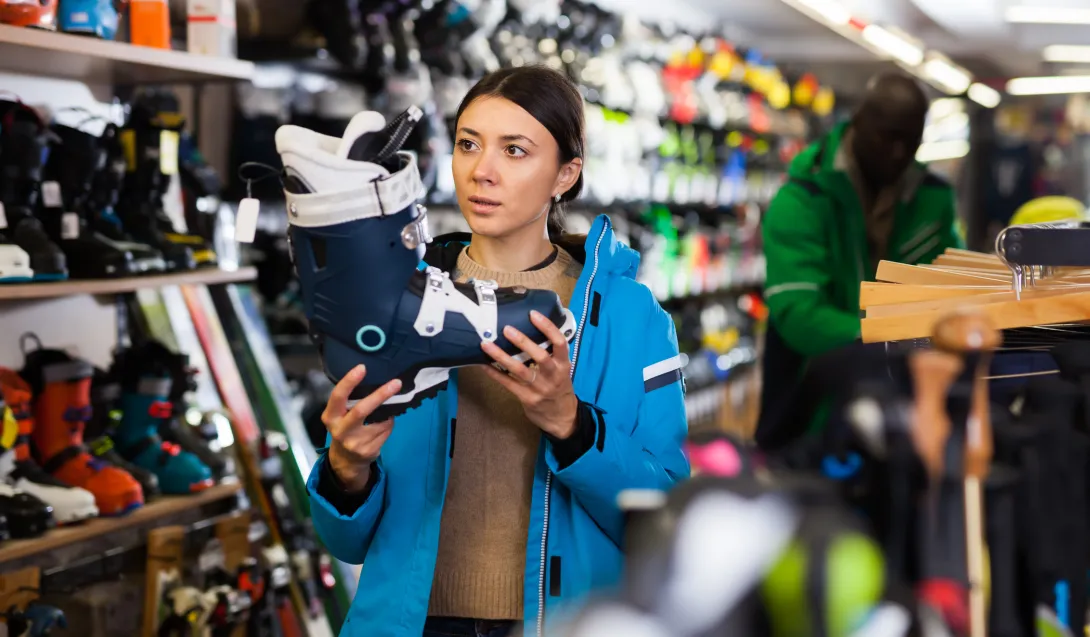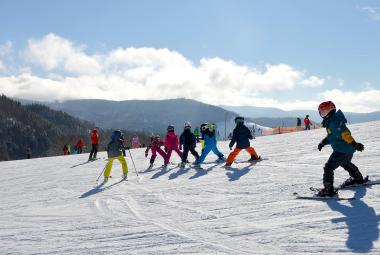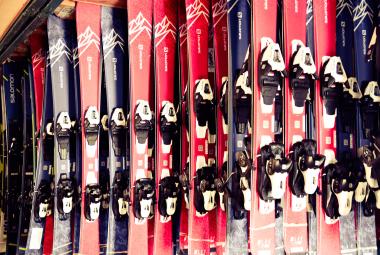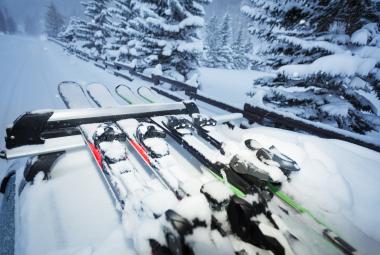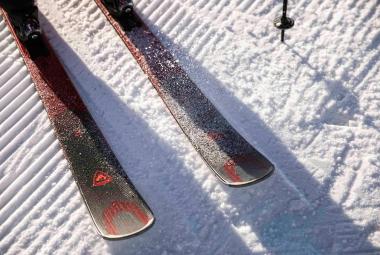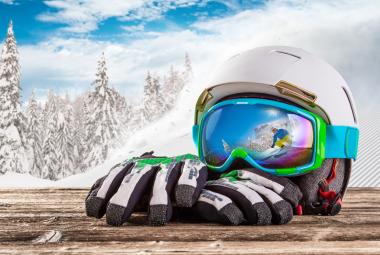Ski boots might not get the same attention as skis, but choosing the right ski boot is arguably the most important part of your setup.
The reason why boots are so important is it's a transfer of energy between your body and your skis, so a good pair of boots will vastly improve your comfort and ability to control your skis.
If there's one area to spend a little bit more, a good pair of boots is a good place to start. Ski boots have a lot of customization potential, that can only be accomplished by a professional boot fitter. Finding the right boot can make a big difference in how comfortable you are on the slopes, as well as well your gear performs for you.
How to choose ski boots
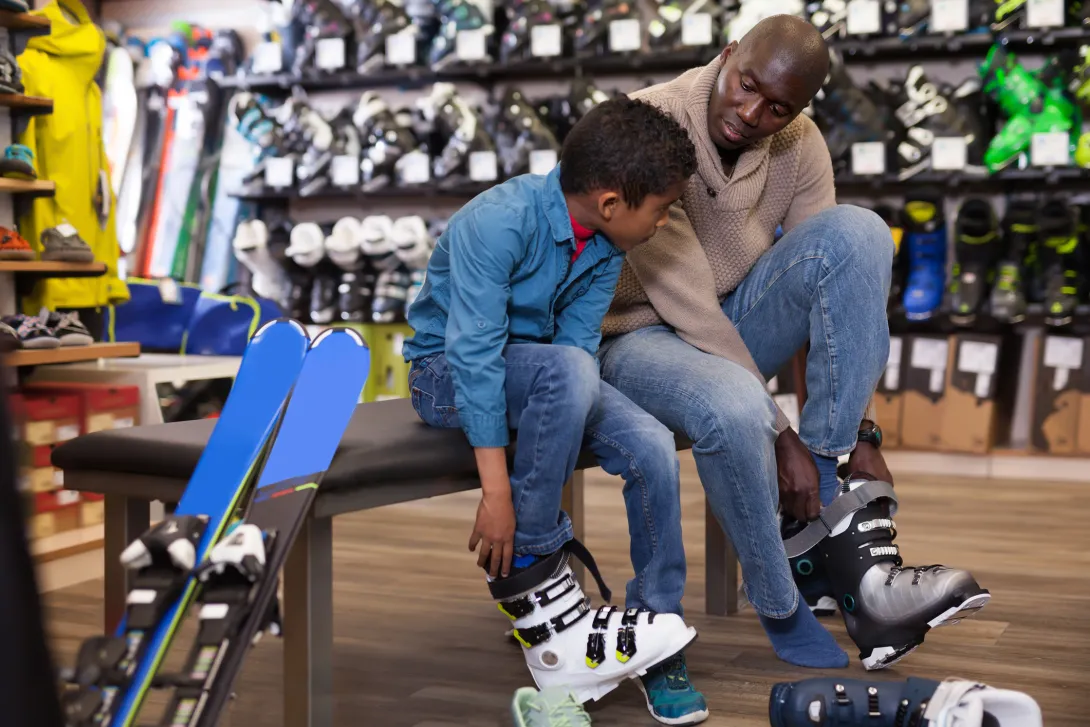
Finding the correct size, fit and flex are the primary factors to consider when shopping for ski boots and understanding these factors will help you pick out the boots that are the right choice for you.
Choosing the best ski boot for you starts with the size and fit to ensure you get the right boots for your feet. You can go to ski shop and get a fit before looking at anything else to ensure you have the right size.
An in person boot fit is the absolute best way to get dialed with the right pair.
What is the correct ski boot size?
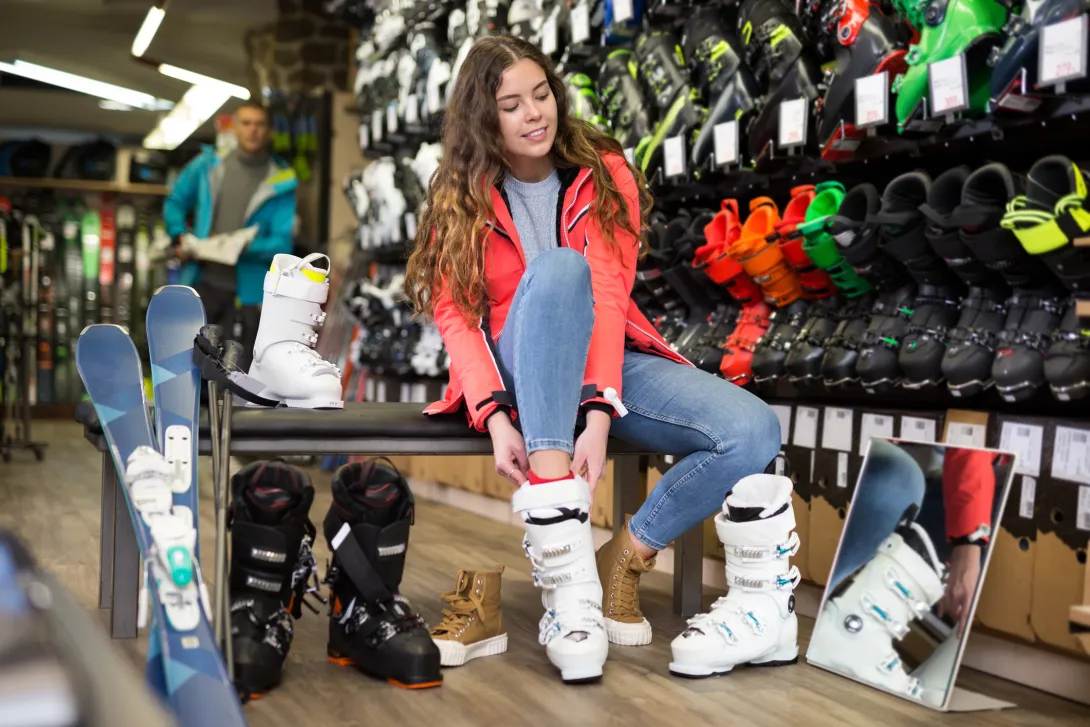
Ski Boots use mondopoint sizing, which is the actual interior length of a boot in centimetres. A boot that is sized 26.5, for example, means that the boot is ideal for feet that are 26.5 centimetres in length.
Compared to your regular shoe size, a ski boot should fit a lot more snug than a regular sneaker.
Also, ski boots don't come in half sizes. Most brands use the exact same boot shell for both full and half sizes, so that means boot stickered as 26 and 26.5 are usually identical.
How should a ski boot fit?
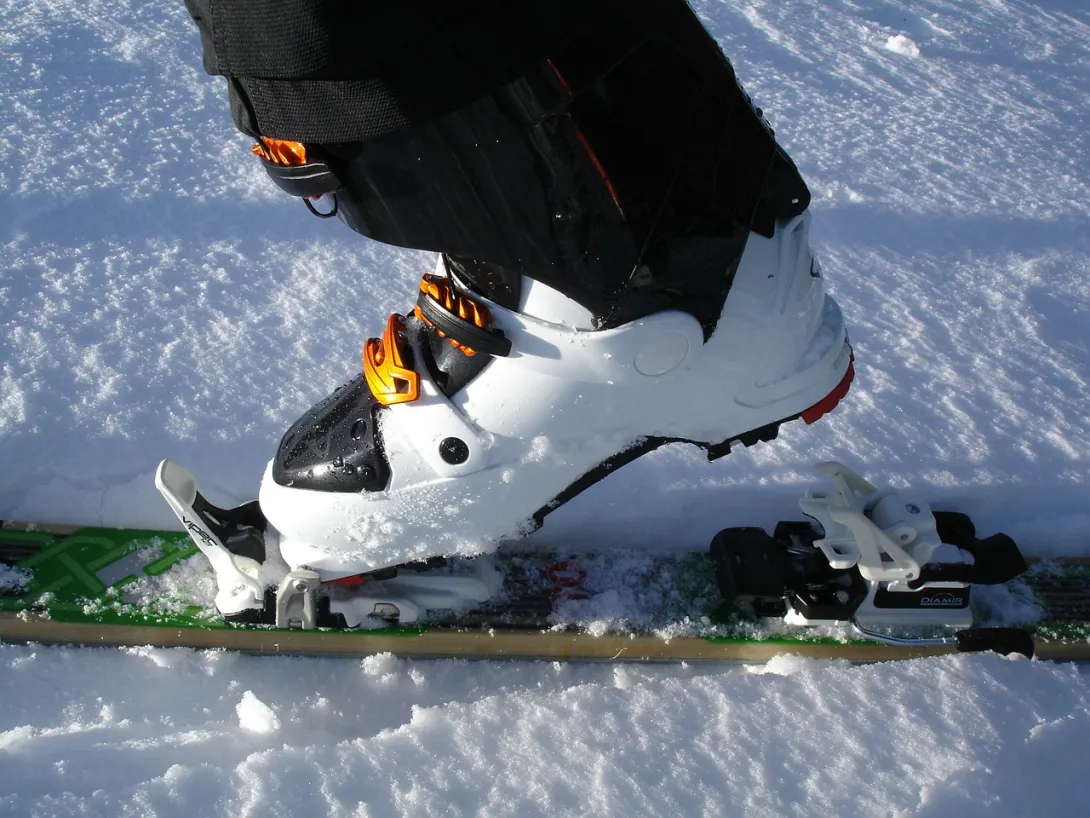
With your foot in the boot, you're looking for light contact with the toes and a solid heel hold when buckled down and flexing forward.
When buckling boots, start with the buckle just above your ankle, usually the second buckle from the top, then work your way up to get a snug fit around your calf and shin, then finish by buckling the bottom buckles over your instep and toes.
Ski boot width
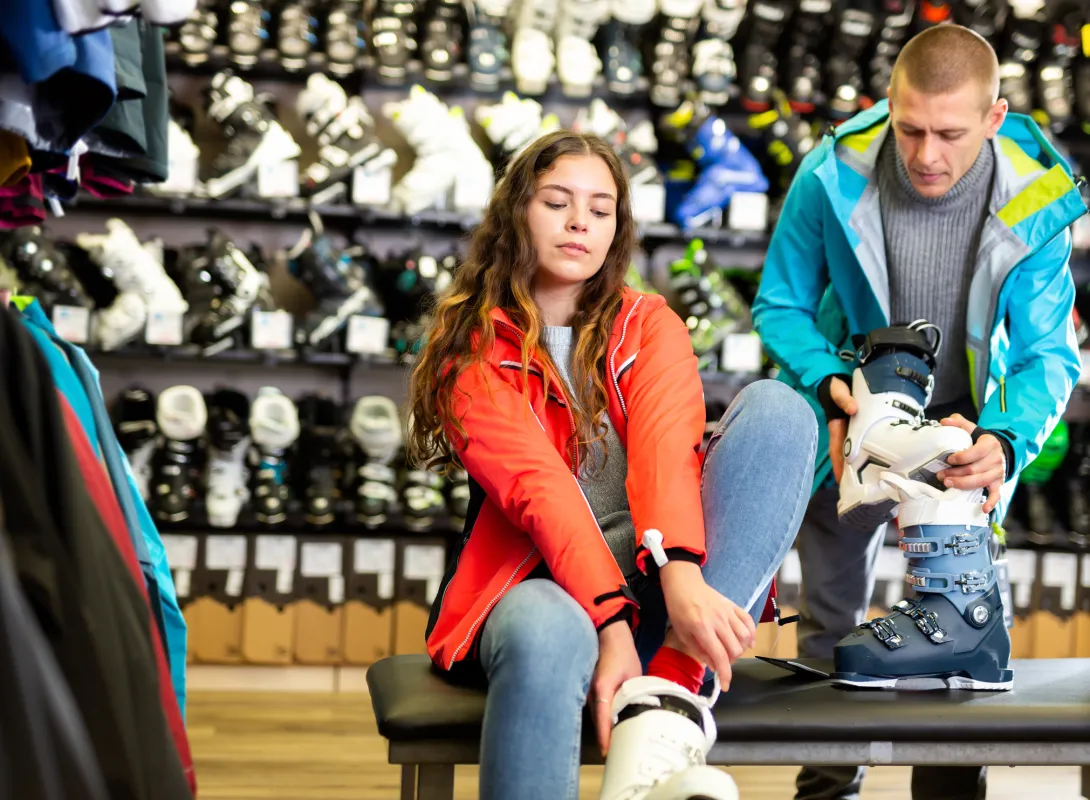
Ski boots also come in a wide range of widths, called a boot last.
The last is measured in millimeters and is a measure of the interior width of the boot across the metatarsals, usually the widest part of your foot.
- If you have narrower feet or want a tighter, more performance fit, consider boots under 100 millimetres in last.
- If your feet are wider or you prefer a more relaxed fit, consider boots that are 100 millimetres or wider.
How tight should my ski boot be?
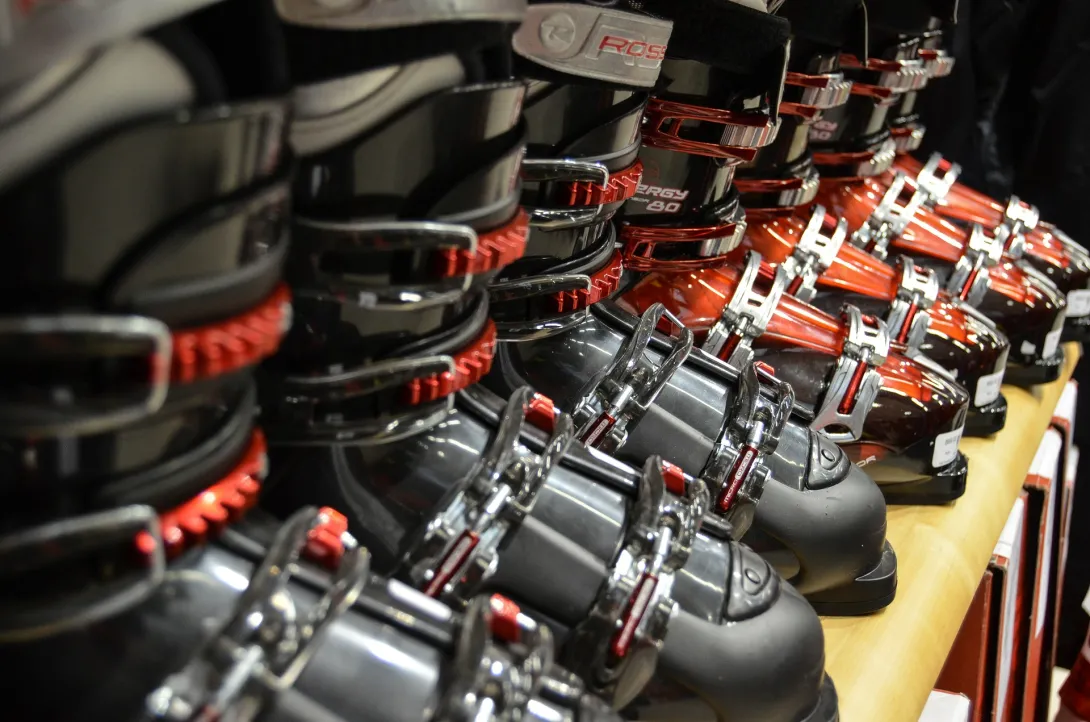
You probably want to start with a snug fit for your boots because as you ski, the boots will get looser and more packed out as you use them.
A loose boot is not a comfortable boot. In fact, it can cause you a lot of pain and discomfort.
What is the correct flex?
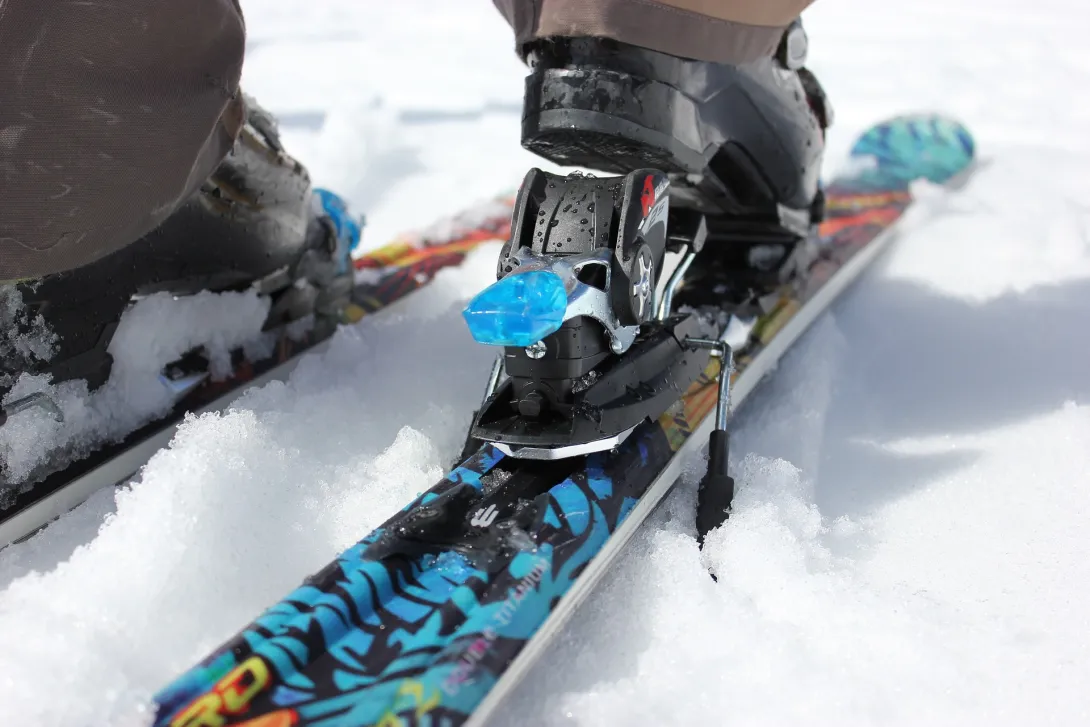
The way a ski boot flexes has a big impact on how your ski responds, so finding the correct flex for you is very important.
Choosing the correct ski boot flex is largely determined by your weight and ability level. The heavier and more skilled you are, the stiffer the boot should be.
Flex is determined by a number rating, ranging from about 60 on the low end to 130 or more on the high end.
You're going to want a stiffer flex if you want to be a more aggressive skier. That's because boots with a stiffer flex are made with denser materials and harder liners, and the buckles and plastics are of a better quality.
Beginning and intermediate skiers that are taller, heavier, or stronger than the average skier may find stiff flex boots a better option because of the increased ability to leverage a stiffer boot. Same for anyone that has a lack of flexibility in their joints.
Men
- Beginner to intermediate men: boots in the 60 to 100 range
- Advanced to expert skiers: booths in the 100 to 130 range
Women
- Beginner to intermediate women: boots in the 50 to 80 range
- Advanced to expert skiers: booths in the 80 to 110 range

